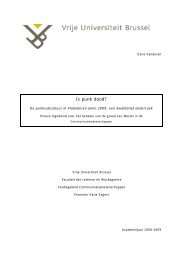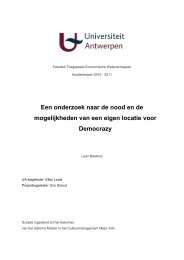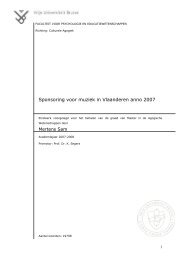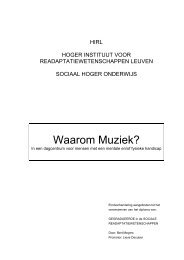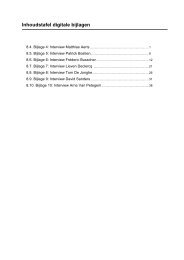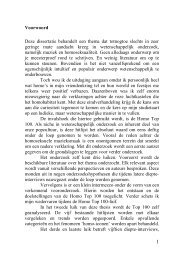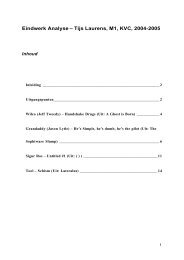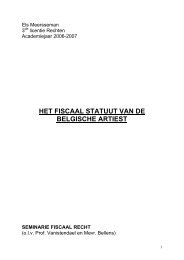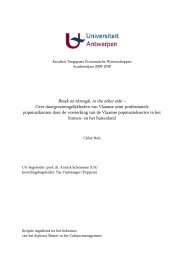Hip hop identity in a township reality. - Poppunt
Hip hop identity in a township reality. - Poppunt
Hip hop identity in a township reality. - Poppunt
Create successful ePaper yourself
Turn your PDF publications into a flip-book with our unique Google optimized e-Paper software.
together <strong>in</strong> our f<strong>in</strong>d<strong>in</strong>gs, where we will demonstrate how cross<strong>in</strong>g is put <strong>in</strong>to<br />
practice.<br />
1. Introduction<br />
For several decades now, code-switch<strong>in</strong>g has been an <strong>in</strong>terest<strong>in</strong>g and fertile field of<br />
research <strong>in</strong> l<strong>in</strong>guistics. Scholars constructed many different theories about codeswitch<strong>in</strong>g,<br />
but not everybody agreed on them. It is difficult to f<strong>in</strong>d ones way<br />
amongst all the different term<strong>in</strong>ologies and explanations, but eventually we<br />
recognise that two tendencies of th<strong>in</strong>k<strong>in</strong>g can be dist<strong>in</strong>guished concern<strong>in</strong>g the<br />
viewpo<strong>in</strong>t on code-switch<strong>in</strong>g. The first one looks at the phenomenon of codeswitch<strong>in</strong>g<br />
from a very narrow angle and restricts it to someth<strong>in</strong>g only perfect<br />
bil<strong>in</strong>guals are able to do. The second one puts code-switch<strong>in</strong>g <strong>in</strong> its correct position,<br />
and proves that it is more than a mere usage of two languages <strong>in</strong> one conversation.<br />
We will discuss both of them, but we must po<strong>in</strong>t out that we are advocates of the<br />
latter one. The <strong>in</strong>formation we gathered dur<strong>in</strong>g our fieldwork gives an explanation<br />
as to why we support the second theory. These empirical f<strong>in</strong>d<strong>in</strong>gs prove that the<br />
second viewpo<strong>in</strong>t is much more realistic and accurate than the first one.<br />
We must also emphasise that the <strong>in</strong>formation we provide about the ‘general<br />
accepted op<strong>in</strong>ion and def<strong>in</strong>ition’ is <strong>in</strong>formation we found <strong>in</strong> articles and books about<br />
code-switch<strong>in</strong>g, so it is not our viewpo<strong>in</strong>t and not everyth<strong>in</strong>g that is written below<br />
on that po<strong>in</strong>t is correct. That is why we criticise this first op<strong>in</strong>ion later on. Note that<br />
the survey is done by ourselves, and that the f<strong>in</strong>d<strong>in</strong>gs only serve as an illustration<br />
for the po<strong>in</strong>t given there.<br />
Throughout this chapter, we will expla<strong>in</strong> all that is relevant concern<strong>in</strong>g codeswitch<strong>in</strong>g<br />
for our research. Of course there is much more to know and to clarify<br />
about this topic, but s<strong>in</strong>ce the amount of literature is so extensive, we need to pick<br />
out the most relevant <strong>in</strong>formation. We will start by describ<strong>in</strong>g both viewpo<strong>in</strong>ts, and<br />
we will try to improve the first one where necessary. S<strong>in</strong>ce it is important to know<br />
why speakers reach for code-switch<strong>in</strong>g, we will also briefly discuss the functions<br />
and the contexts <strong>in</strong> which it needs to be situated. This theoretical part will end with<br />
an explanation about the phenomenon of ‘cross<strong>in</strong>g’, s<strong>in</strong>ce this k<strong>in</strong>d of codeswitch<strong>in</strong>g<br />
will be very relevant <strong>in</strong> the <strong>in</strong>terpretation of our data.<br />
2. What is code-switch<strong>in</strong>g? Striv<strong>in</strong>g for a def<strong>in</strong>ition



